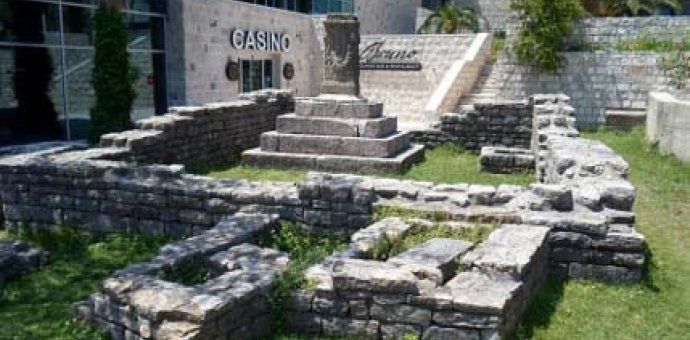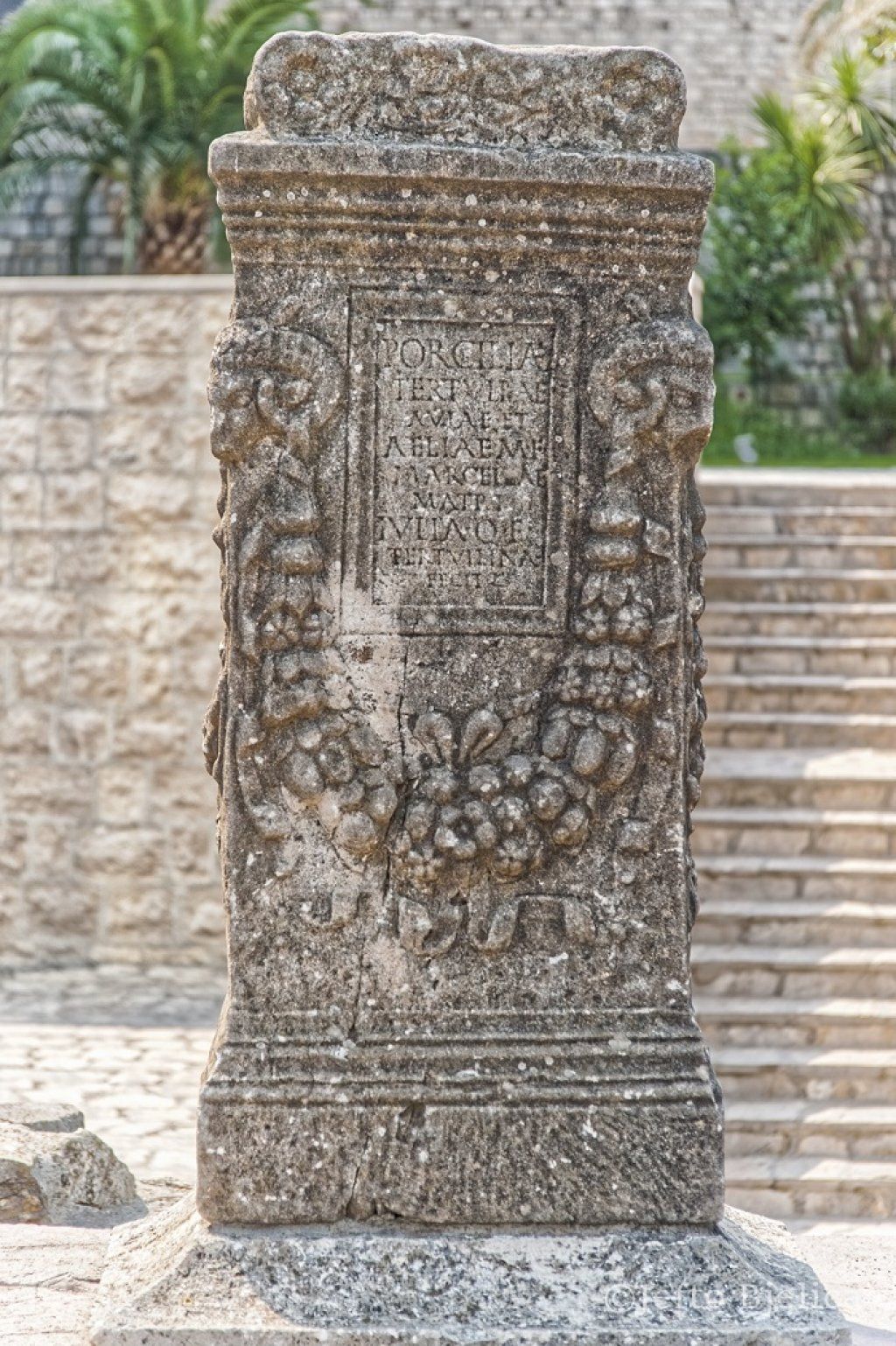November 28, 2018 - International Multidisciplinary Scientific Symposium "Ancient Budva" and the accompanying documentary exhibition "The First Discovery of Antique Necropolises in Budva" organized by the Public Institution "Budva Museums and Galleries" started today in the Modern Gallery in the Old Town. The events took place on the occasion of two significant jubilees - 80 years after the discovery of the ancient necropolis and 15 years since the foundation of the Budva Museum.
What About Ancient Budva?
When digging the foundation for building the hotel "Avala" from 1936-1938, several graves from the Hellenistic and Roman period were discovered. Graves carried valuable goods - especially gold and silver jewelry, various vessels, glass, ceramics, and weapons. The research continued twenty years later, and most intensively after the earthquake in 1979. The necropolis has two parts, the older belonging to the Hellenistic period from the 4th to the 1st century BC, and the newer belonging to the Roman period, the 1st and 2nd century AD. With a total of 450 graves discovered, all the traces lead to the conclusion that the necropolis has been in use for more than a millennium.
Apart from the Museum of Budva, objects from the Budva necropolis, especially those found from 1936-1938 belong today to many other museums (Cetinje, Belgrade, Zagreb, Split) but also to private collections.

Ancient Budva brings together scientists from 8 countries
The organization of the international scientific symposium on the occasion of the anniversary of the great discovery was supported by the Ministry of Culture of Montenegro and the Municipality of Budva, and the partner of "Budva Museums and Galleries" in this project is the Budva Tourist Organization.
Aleksandar Bogdanović, Minister of Culture of Montenegro, opened the Symposium "Ancient Budva" and the exhibition "The First Discovery of the Necropolis in Budva." Academi Aleksandar Čilikov, in front of the Montenegrin Academy of Sciences and Arts, addressed the participants at the beginning of the gathering. Mayor of Budva Dragan Krapović and Lucija Đurašković, director of "Museums and galleries of Budva" welcomed the guests thanking them for being a part of this important scientific meeting with the aim to support further activities to preserve and present the oldest parts of the town's cultural heritage.
"Ancient Budva" is the first scientific meeting organized by the "Budva Museums and Galleries" in the European Year of Cultural Heritage. In Budva, reference lecturers coming from Australia, Italy, Austria, the Republic of Slovenia, the Republic of Croatia, Bosnia, and Herzegovina, Serbia and Montenegro will offer answers to numerous and diverse issues from the ancient past of Budva and the East Adriatic coast.
Ancient Budva Heritage to Read the Context of Hellenic and Roman Times on the Eastern Adriatic
The first day of the conference lasted for three sessions, where participants were able to learn about the antique Budva from the most renowned art historians, architects, and archeologists. Prof. Dr. Adnan Kaljanac spoke on the theme of "The legendary founding of Butua (Budva) and its influence on the appearance of Illyrian ethnos in the Mediterranean." Pprof. Dr. Lucijana Šešelj from the University of Zagreb spoke about Budva and Hellenism on the Adriatic. There were also opportunities for insights into Budva's material culture from the ancient period thanks to lectures by Dr. Milijana Dimitrijević on "Material Culture and Group Identities of Hellenistic Buddhist People" and Stefan Novakovic, who talked about the fortifying construction of Hellenistic Budva and other guild-like settlements on the Montenegrin coast.
The second session of the symposium was devoted to the methodology of research and presentation of the ancient Budva heritage as a cultural heritage. Katarina Jović spoke on the subject of "Ancient Budva Heritage as a Cultural Heritage: the Memory and the Forgiveness of the Ancient Budva Past." The period of antiquity in Budva also left traces of the nautical heritage, spoken by Mr. Gordana Karović, while Mr. Maja Franskovic, Dušan Maksimović, and Dunja Davidović spoke on the topic "Mosaic in a museum setting - the methodology of conservation on the example of an ancient mosaic from Budva." Dobrila Vlahović gave a lecture "Approach to the protection and preservation of cultural and historical values of antique Budva."

(Photo: Foto Bjelica)
The third session of the international symposium was reserved exclusively for the theme of ancient necropolises, discovered 80 years ago. The presentation by Dr. Miroslav Luketic was devoted to memories and records of the first discovery of 1938. Dušan Medin discussed the necropolis interpretations in the period after the invention, from 1938 to 1940, while Doc. Dr. Zorica Kuzmanović, Dr. Jelena Lj. Cvijetić and Mr. Lucija Đurašković talked about the social aspects of the rituals of the dead, the magic power of the graves with bronze bells, and the ways of burial of the deceased in the antique on the example of the Budva necropolis.
Three scientific sessions are planned for tomorrow, as well as a visit to the remains of ancient Budva and the Museum of Budva. The first session will focus on topics of importance for the interpretation of the findings of Hellenistic ceramics in Budva, and the second session deals with the artifacts of glassware and warfare equipment.
The last part of the scientific symposium stands for topics of importance for the evaluation and treatment of the archeological heritage of the broader area of the Montenegrin coast, as well as models of action aimed at better treatment of the oldest layers of cultural heritage.
The conference will end on Friday, 30 November, when participants will be able to meet the cultural heritage of the Old Town of Budva in the company of local guides.
This important project, which promotes the rich cultural and historical past of Budva as an ancient city, has been supported by numerous socially responsible companies and public companies from Budva (Dukley, Adriatic Fair, Zeta Film, Budva Water Supply and Sewerage, Mediterranean Advertising, Lovcen Film, Splendid Hotel, Budva Hotel , the hotel Grbalj, the Adriatic restaurant Kod Krsta and the Porto restaurant). On the occasion of the organization of the exhibition "The first discovery of the ancient necropolises in Budva", Budva's Museum established cooperation with the museums where archaeological artifacts discovered in Budva necropolises are preserved, including the National Museum (Serbia), Archaeological Museum in Zagreb (Croatia), Archaeological Museum in Split (Croatia) and Museum of Fine Arts in Boston.








